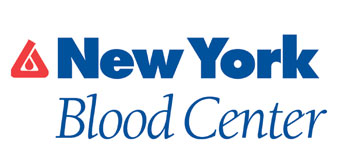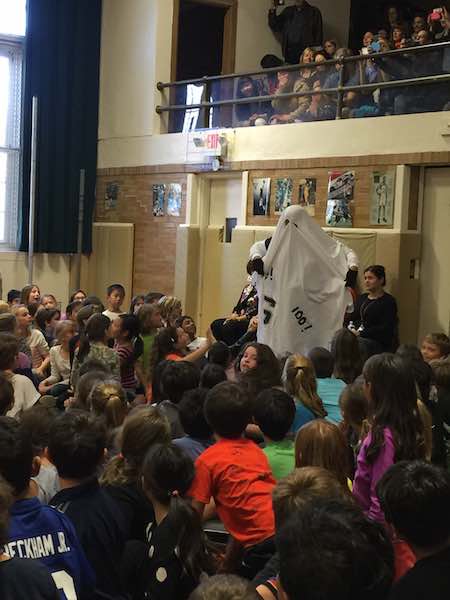Giving Tuesday -December 1st
- Details
- Written by: Stacie M. Waldman
- Hits: 5597
 "How wonderful it is that nobody need wait a single moment before starting to improve the world," wrote Anne Frank in her diary in 1944.
"How wonderful it is that nobody need wait a single moment before starting to improve the world," wrote Anne Frank in her diary in 1944.
We all know the WHY we should get involved, but the WHAT and the HOW are can be more challenging to figure out on your own, so here are some easy, quick, and meaningful ways to get involved in giving during the holidays. Many recent Facebook posts on Scarsdale Moms and Westchester Moms ask about how one might participate in charitable work here in Westchester over the holidays. Some want to include their children in doing good deeds during the holiday season.
A mom of two in Edgemont works hard throughout the year to keep her kids involved in charitable work. "Every child is different," she said. "I take my son to volunteer because he is eager to help and serve and others. He enjoys it. I take my daughter to volunteer because while she can be kind when she chooses to be, she often puts herself first and is not eager to share or care for others." This mom told me that she continues to involve her daughter in volunteer work so she can learn how good she has it, and how good it can feel to help others. "As she gets older," she added, "I will continue to make a point of including it and requiring it from her."
Here's the low-down on some good deed opportunities in the Scarsdale area.
Donate Money or Items
A Quaker Ridge mom of two does the same thing we do during Chanukah and it can be done for Christmas or birthdays as well. One night, their gift is a gift of money that goes to a charity to which they would like to donate. My kids are 5 and 7 so we have always helped them figure out a cause that is important to them. My daughter loves animals (and dolphins especially), so last year she donated to the Clearwater Aquarium in Florida (home of the tail-less dolphin from Dolphin Tales 1 and 2.) My son loves soccer and we found a charity that brings soccer equipment and training to impoverished communities in the U.S. and abroad. For her birthday, my daughter asked friends to donate pet items which she gave to a local shelter. She certainly got something out of this because they let her play with the animals and wrote her a beautiful thank you note, and now she wants to do the same for her birthday this year. Bringing her to the shelter really helped her see that she was helping the animals. Be sure to check out a site like www.charitynavigator.org before you donate money.
Jen Premisler, a Quaker Ridge mom of two sons (ages 5 and 2) has found a wonderful way to bring charity into her home. "It started three years ago when our family was talking about Chanukah and what the kids needed or wanted; it occurred to us that our kids didn't have a true need for anything. I don't apologize for that," she continued, "but I think our boys should understand what other kids may feel during the holidays. Instilling a sense of community responsibility in them was important to us." Jen started a Chanukah tradition: one night her boys would not receive a gift but rather give a gift to a child that would otherwise not receive one. "We wanted the gift to be donated to a child locally so it was related to our community responsibility," she said. "They come shopping with me for the gift and we donate it." The first year they found a local place for gift donation but quickly realized that others wanted to participate as well. Jen found a way on her own to partner with Grace Church and Lifting Up Westchester. "My partner there, Nancy Inzinna, has been amazing throughout this journey," she said. Last year, she put a post on Facebook about what they were doing and encouraged others to join resulting in 30 families donating over 50 gifts. This year over 80 donated gifts have been promised by families in the Scarsdale community. "Lifting Up Westchester supplies the wish list from kids at the shelter and who are a part of their after school program," Jen said. "We bring the gifts to Lifting Up Westchester during Chanukah. Families that have donated gifts come with us so that kids can see what it looks like to bring this many gifts and give them away. One night of Chanukah we talk about how we donated and delivered the gifts when we light the candles. Contact Jen at jen.premisler@gmail.com if you'd like to see an underprivileged child's wish list and donate a gift.
two sons (ages 5 and 2) has found a wonderful way to bring charity into her home. "It started three years ago when our family was talking about Chanukah and what the kids needed or wanted; it occurred to us that our kids didn't have a true need for anything. I don't apologize for that," she continued, "but I think our boys should understand what other kids may feel during the holidays. Instilling a sense of community responsibility in them was important to us." Jen started a Chanukah tradition: one night her boys would not receive a gift but rather give a gift to a child that would otherwise not receive one. "We wanted the gift to be donated to a child locally so it was related to our community responsibility," she said. "They come shopping with me for the gift and we donate it." The first year they found a local place for gift donation but quickly realized that others wanted to participate as well. Jen found a way on her own to partner with Grace Church and Lifting Up Westchester. "My partner there, Nancy Inzinna, has been amazing throughout this journey," she said. Last year, she put a post on Facebook about what they were doing and encouraged others to join resulting in 30 families donating over 50 gifts. This year over 80 donated gifts have been promised by families in the Scarsdale community. "Lifting Up Westchester supplies the wish list from kids at the shelter and who are a part of their after school program," Jen said. "We bring the gifts to Lifting Up Westchester during Chanukah. Families that have donated gifts come with us so that kids can see what it looks like to bring this many gifts and give them away. One night of Chanukah we talk about how we donated and delivered the gifts when we light the candles. Contact Jen at jen.premisler@gmail.com if you'd like to see an underprivileged child's wish list and donate a gift.
Leslie Chang, a Scarsdale mom, is a board member with Family Services of Westchester and looks forward to its adopt-a-family program every year. "Participating in FSW's Adopt-a-Family program has become a part of my family's holiday tradition. Last year, our adopted family was a mother with 4 children who had escaped an abusive situation. The mom had just started an entry-level job and was working hard to overcome trauma and financial obstacles. Giving to another local family in their time of need is what the holidays are all about and it's nice to share that sentiment with my children," she said.
Donate Blood/Plasma/Platelets
The New York Blood Center in Elmsford is a permanent blood donation center. You can donate once or on a regular basis and they accept blood, plasma, and platelets. You can be creative with blood donation and even make a date night out of it with your partner. The Elmsford location has later hours on Tuesdays and Thursdays and a back route gets you to fabulous restaurants in Tarrytown in 7 minutes.
I have brought my kids with me to donate blood and the techs have been great at explaining to them how donating blood can help save someone's life. This is recommended for kids ages 6+ and they should be able to sit for at least 30 minutes. Your kids might even get treated to a snack and stickers.
The Red Cross holds regular blood donation drives all over Westchester.
Local hospitals also have blood donation centers. Call for specific donation policies and donation center hours.
Thank our Civil Servants
A great and easy way to say thanks to Scarsdale's firefighters, ambulance workers, or police is to drop off a tray of food for them. (Sandwiches, cookies, even a couple of pizzas.) Kids will love saying thank you and if they're old enough to make cards or pictures, this is always appreciated.
Church and Synagogue-based Volunteering/Charity
Contact your local religious organization about volunteer activities. Many regularly hold food drives, winter coat drives, and general clothing drives. Kids love the feeling of dumping bags of food into collection containers. Laurie Feinstein, a mom of three in Edgemont, volunteered through her synagogue this past weekend preparing food for a Thanksgiving feast hosted by the Coachman homeless shelter in White Plains. "I hope my children learn two things from the experience," she said. "One is that everybody does not have what you have so be grateful for the food, shelter and clothes that just appear in your lives. The other is that you can use your time and two hands to make someone else's day better." She tells her kids, "the bread you knead will be eaten by a child happy to pick it out of the bread basket. The cake you bake will possibly be the only dessert that child has for a week. The Thanksgiving decorations the volunteers put up may be the only ones that have ever been hung up just for them." Laurie will literally tell her children, ages 5 and 7, that while it can be sad to think about what people don't have, it also reminds us of how much power we have in our hands to make someone's life better, even if it's just for a night.
School Charity Collections
Scarsdale schools do a phenomenal job of encouraging children and parents to help those that are less fortunate. Look for information that comes home with your child about what is being collected or go to the school's website for more information.
Westchester County Diaper Bank
The Junior League of Central Westchester (JLCW) has partnered with County Executive Rob Astorino and the Department of Social Services to open the very first diaper bank in Westchester. JLCW and its partners have  worked hard to increase the awareness of the need for diapers which are not a luxury item for parents. Diapers are not covered under federal assistance programs and some families must choose between buying diapers or formula, food and medication. Kids are really able to understand this concept, and there's something very cute and meaningful about watching your 3-year-old throw a big pack of diapers in a diaper collection bin. Bins exist all over Scarsdale and you can even host your own diaper drive at your child's preschool, church, synagogue, or fitness center.
worked hard to increase the awareness of the need for diapers which are not a luxury item for parents. Diapers are not covered under federal assistance programs and some families must choose between buying diapers or formula, food and medication. Kids are really able to understand this concept, and there's something very cute and meaningful about watching your 3-year-old throw a big pack of diapers in a diaper collection bin. Bins exist all over Scarsdale and you can even host your own diaper drive at your child's preschool, church, synagogue, or fitness center.
Volunteer New York!
The mission of Volunteer New York is to "...inspire, mobilize, and equip individuals and groups to take positive action to address pressing challenges, support nonprofits and strengthen the quality of life in our community." The search engine on their website will allow you to learn about every volunteer opportunity in the area, and actually sign up for dates and times. "We encourage adults to serve, youth to build character, families to bond, young professionals to lead, mature adults to share their wisdom and businesses to support our community," the site reads. And they mean it- many volunteer spots welcome children of various ages.
And, of course, if you'd rather donate money, Giving Tuesday is coming up on December 1st. Just be sure to check out a site like www.charitynavigator.org to ensure that your charity is highly ranked.
Administration Recommends No Changes to World Language Offerings
- Details
- Written by: Melissa Hellman
- Hits: 6400
 Lynne Shain, Scarsdale's Assistant Superintendent for Instruction, presented the results of the world language review community surveys at a BOE study session on November 15. She announced that based on survey results, "the administration recommends continuing the current world language offerings at the middle school and high school for the 2016-17 school year."
Lynne Shain, Scarsdale's Assistant Superintendent for Instruction, presented the results of the world language review community surveys at a BOE study session on November 15. She announced that based on survey results, "the administration recommends continuing the current world language offerings at the middle school and high school for the 2016-17 school year."
As background, during the 2015-16 budgeting process a group of parents presented a petition to the Board requesting Mandarin language instruction in the middle school. In March, the Board responded that it would study the issue for possible addition to the 2016-17 curriculum. This undertaking was further formalized by the inclusion of a world language review as part of the 2015-18 Transition Plan document that is serving as the guidepost for Board of Education endeavors. A committee, comprised of teachers and administrators from the elementary, middle and high school was formed in May to conduct the review and make a recommendation for future changes to the world language program.
The committee sent out four surveys to parents and students over the month of October. Each was designed to gather certain information about interest in world language offerings and potential enrollment in middle school Mandarin.
Survey 1 was sent to parents of students in K-5th grades to determine if adding additional languages to the middle school was important to parents, which languages parents would like to see added and to specifically ask for the language choices by year, if Mandarin was offered. The response rate for this survey was 39%.
Survey 2 was sent to parents of K-11th grade students to determine whether parents would like additional world languages added to the high school program (Mandarin has been offered at the high school since 2011-12) and to determine if parents were interested in their children enrolling in more than one language at a time in their high school program. The response rate for this survey was 17%.
Survey 3 was sent to students in 6th-11th grade to determine their interest in adding an additional language. The response rate for this survey was 9%.
Survey 4 was sent to parents of current 5th graders to get a more accurate count of probable 6th grade student world language choices in the 2016-17 school year if Mandarin was available in the middle school. The response rate for this survey was 54%.
Surveys 1 and 4 had the highest response rate most likely because this group has the most interest in the middle school language offerings in the near term.
Some of the key findings of Survey 1 are that 47% of respondents thought that adding a language at the middle school was very important and an additional 22% ranked it as important. 56% of respondents thought that the additional language should be Mandarin. This survey also determined that a number of the parents who indicated Mandarin as first choice for an additional language at the middle school already have their children enrolled in Mandarin outside of school. This information is considered significant because there would be no leveling of language classes in the middle school. Consequently, there is concern that students who take Mandarin outside of school would already be beyond a 6th grade introductory course.
Survey 4, which attempted to get at the actual middle school language enrollment numbers for next year if Mandarin was offered, indicated that respondents' student enrollment by language would be as shown below.

While the interest in Mandarin is slightly higher than the interest in French, in the administration's view, it is not a strong enough number to justify the programmatic, logistical and financial implications of adding the program at this time. There were some questions raised about the possibility of replacing French with Mandarin. Board member William Natbony noted although the numbers for Mandarin interest were higher than French, surveys did not ask parents if they would like to see French replaced by Mandarin. During discussion Board member Chris Morin supposed, "if we were starting from scratch I think maybe the votes would have been for Spanish and Mandarin rather than Spanish and French, but we are not starting from scratch and we have a very practical set of issues to confront". Some of the issues include the cost of recruiting and hiring a full-time Mandarin teacher and the cost associated with the required corresponding staff reduction in the world language department. Other considerations have to do with the complexities of the middle school schedule driven by the house system (requiring offering the language by grade in all 4 houses), leveling with consideration for the number of students who take Mandarin outside of school, and concern about a drop out rate as has been seen in significant numbers in Mandarin classes in the high school.
The public comment period of the 8:00pm business meeting occurred shortly after the conclusion of Shain's report and recommendation. Mandarin supporters in the community were undeterred and many approached the mic to reiterate their views on the importance of adding Mandarin to the middle school. A few speakers attempted to address some of the concerns raised by Shain such as the drop out rate in the high school may be improved if students began to learn the language earlier and the response rates for surveys 1 and 4 were not "low" even though a low response rate was cited as a factor in driving the Administration's recommendation. Following the meeting, supporters of Mandarin sent a letter to Scarsdale10583 for publication. Read it here.
The detailed survey results as well as further explanations on the issues under consideration can be found in the appendix to the meeting agenda (pages 4-45). The entire study session can be viewed on the Video on Demand site.
Maroon and White Celebrates a Stellar Fall
- Details
- Written by: Carly and Hannah Glickenhaus
- Hits: 8062
 Fall 2015 was a stellar few months for Raiders Athletics. Both team and individual accomplishments studded each sport's season. However, like the Mets, many of the teams could not carry their momentum when it counted most and fell short Sectionals. Nonetheless, there were highlights and memories to be recounted as the teams congregated one last time at the Fall Awards Dinner hosted by the Maroon and White.
Fall 2015 was a stellar few months for Raiders Athletics. Both team and individual accomplishments studded each sport's season. However, like the Mets, many of the teams could not carry their momentum when it counted most and fell short Sectionals. Nonetheless, there were highlights and memories to be recounted as the teams congregated one last time at the Fall Awards Dinner hosted by the Maroon and White.
 The Varsity football team had their sights set on a Section Championship heading into the season and the squad was tested with one of the toughest schedules in school history. While they could not quite capitalize on their winning momentum in the postseason, Senior Captain Michael Rolfe considers the season a success. He says, "We made it to the Class AA semi-finals. This was the first appearance in the semis for Scarsdale football ever. This team made history and will be recognized as one of the top teams in Scarsdale football history." The boys finished 6-3, ending their season with a tough defeat by New Rochelle.
The Varsity football team had their sights set on a Section Championship heading into the season and the squad was tested with one of the toughest schedules in school history. While they could not quite capitalize on their winning momentum in the postseason, Senior Captain Michael Rolfe considers the season a success. He says, "We made it to the Class AA semi-finals. This was the first appearance in the semis for Scarsdale football ever. This team made history and will be recognized as one of the top teams in Scarsdale football history." The boys finished 6-3, ending their season with a tough defeat by New Rochelle.
Raiders Field Hockey, better known as "flockey," finished 12-6. Senior Eliza Brosgol says, "the biggest factors that contributed to our team's success were our determination and our positive attitudes. The combination allowed for a motivated and supportive team." Another key contributor to their success this season was learning to work on communication skills. That came with having a close-knit team, on and off the field. Brosgol says, "I think it's really important that the team became close off the field. We were a team of mostly returning players so it was easy for us to reconnect after a year apart. It's a great group of girls and I think that our closeness helped us trust each other on the field. Plus, it's fun when you like who you are playing with." The Raiders went out with a bang, pressing hard and giving Horace Greeley a close game in the Section Semi-Finals. "Of course it would have been nice to make it to the section finals, but we fought hard and gave it our all in a double OT and a shoot-out."
team became close off the field. We were a team of mostly returning players so it was easy for us to reconnect after a year apart. It's a great group of girls and I think that our closeness helped us trust each other on the field. Plus, it's fun when you like who you are playing with." The Raiders went out with a bang, pressing hard and giving Horace Greeley a close game in the Section Semi-Finals. "Of course it would have been nice to make it to the section finals, but we fought hard and gave it our all in a double OT and a shoot-out."
 Even though cross-country is an individual sport, the Raiders made every practice and every competition a team effort. The team's success is a product of individual tenacious work ethics. Senior Charlie Musoff says, "Some of our workouts can be brutal, but every day we buckle down and run hard... Without your teammates to push you, it is a much more difficult mental game to push through that last mile or even maintain a steady pace." One highlight of the season was when the Boys' Varsity, JV, and Freshman teams swept the League Meet. The team boasted 8 All-League runners, and everyone loves watching their teammates succeed. Musoff notes that the team dynamic was strong this fall. "You cannot rely on anyone else to run your race for you. As Coach Clark likes to say, we 'run as one'... I may have a good race, but if the team as a whole runs poorly, I am not successful."
Even though cross-country is an individual sport, the Raiders made every practice and every competition a team effort. The team's success is a product of individual tenacious work ethics. Senior Charlie Musoff says, "Some of our workouts can be brutal, but every day we buckle down and run hard... Without your teammates to push you, it is a much more difficult mental game to push through that last mile or even maintain a steady pace." One highlight of the season was when the Boys' Varsity, JV, and Freshman teams swept the League Meet. The team boasted 8 All-League runners, and everyone loves watching their teammates succeed. Musoff notes that the team dynamic was strong this fall. "You cannot rely on anyone else to run your race for you. As Coach Clark likes to say, we 'run as one'... I may have a good race, but if the team as a whole runs poorly, I am not successful."
 The Girls' Swim team's passion and school spirit was perhaps best displayed when they wore towel capes and goggles to school the day of a meet. Even though the team did not pull together as many wins as they would have liked, they were able to enjoy the season regardless through new friendships and a sense of unity. The Raiders will send three competitors off to the next level: Swimmers Scottie Berridge and Tanvi Pabby and Diver Samantha Ho will compete at States.
The Girls' Swim team's passion and school spirit was perhaps best displayed when they wore towel capes and goggles to school the day of a meet. Even though the team did not pull together as many wins as they would have liked, they were able to enjoy the season regardless through new friendships and a sense of unity. The Raiders will send three competitors off to the next level: Swimmers Scottie Berridge and Tanvi Pabby and Diver Samantha Ho will compete at States.
The Girls' Soccer season flew by as the Raiders reveled in a hot streak. They went undefeated for 13 games straight, and had a five game shutout streak in the final weeks of the season. Unfortunately, like several sports teams, the Raiders could not carry over their penchant for victory into November. They finished 13-3-2 after being edged out of Sectional competition by a pressing New Rochelle team 2-1 in Quarterfinals. It was difficult for everyone to see the season slip through their fingers on a low note, but there was much to be proud of. The Raiders beat rivals Mamaroneck and Ursuline twice to clinch the League title as undefeated  Champions. Senior Goalkeeper Carly Glickenhaus, Senior Defender Zoe Epstein, Junior Defender Sophia Mohlulis, and Senior Defender Eryn McDonald, the Raiders core back line, were named All-Section, and star midfielder Kate Donovan was All-Section Honorable Mention. The girls were closer than ever this year; everyone from Seniors to Freshmen had a positive attitude about branching out, and thanks to team bonding activities the girls developed a sense of trust that played out in the high pressure situations of a match.
Champions. Senior Goalkeeper Carly Glickenhaus, Senior Defender Zoe Epstein, Junior Defender Sophia Mohlulis, and Senior Defender Eryn McDonald, the Raiders core back line, were named All-Section, and star midfielder Kate Donovan was All-Section Honorable Mention. The girls were closer than ever this year; everyone from Seniors to Freshmen had a positive attitude about branching out, and thanks to team bonding activities the girls developed a sense of trust that played out in the high pressure situations of a match.
The Boys' Soccer team finished 15-3-1.  Unlike the girls, boys were not allowed to compete on both Varsity and their respective club and Academy teams, so many were faced with a difficult decision. At the awards dinner, Senior Captain Fazl Shaikh shared that he was happy with his decision to play for the Raiders. Many players have found that the camaraderie and school spirit on Scarsdale teams is unparalleled. A strong team dynamic can be a source of fun, but it is also a breeding ground for success. Shaikh says, "Team chemistry is vital because without that the team will never go far. In playoffs games it is all about grinding out the win and you can only do that if you have team chemistry." The team had its ups and downs this season, and many were disappointed they did not have the opportunity to make a run on States. Nonetheless, they have winning streaks and upsets to be proud of. Shaikh adds, "For our team success of winning the league, being ranked the 3rd seed in Section 1, and ending with a solid record, that all had to do with how much we worked in preseason and throughout the season."
Unlike the girls, boys were not allowed to compete on both Varsity and their respective club and Academy teams, so many were faced with a difficult decision. At the awards dinner, Senior Captain Fazl Shaikh shared that he was happy with his decision to play for the Raiders. Many players have found that the camaraderie and school spirit on Scarsdale teams is unparalleled. A strong team dynamic can be a source of fun, but it is also a breeding ground for success. Shaikh says, "Team chemistry is vital because without that the team will never go far. In playoffs games it is all about grinding out the win and you can only do that if you have team chemistry." The team had its ups and downs this season, and many were disappointed they did not have the opportunity to make a run on States. Nonetheless, they have winning streaks and upsets to be proud of. Shaikh adds, "For our team success of winning the league, being ranked the 3rd seed in Section 1, and ending with a solid record, that all had to do with how much we worked in preseason and throughout the season."
Fall athletes mourn the conclusion of their seasons and the concomitant loss of their first quarter gym exemptions. Blissful fall afternoons on the pitch will be replaced by cold afternoons where there is no excuse for delaying homework. Instead of wearing jerseys and Raider apparel two to three times a week on game days, the girls' soccer team laments that they will have to return to their wardrobes and start picking clothes again. Amongst this nostalgia, however, the Varsity volleyball team is still killing their game. The girls won Section 1 this past weekend and will play at John Jay Cross River at 11 on Saturday November 14 with hopes of bringing home a Regional Victory and a ticket to the State Competition. This sliver of fall sports mania persists as the winter sports teams gear up for their season.
Article by Carly Glickenhaus, Photos by Hannah Glickenhaus

Halloween Fun at Scarsdale Elementary Schools
- Details
- Written by: Joanne Wallenstein
- Hits: 6125
 The Friday before Halloween brought sunny skies to Scarsdale. It was a perfect day for Halloween parades and celebrations at the elementary schools.
The Friday before Halloween brought sunny skies to Scarsdale. It was a perfect day for Halloween parades and celebrations at the elementary schools.
At Heathcote the theme was Emoji's – and Principal Maria Stile and her staff led the parade wearing bright yellow smiley faces. It was hard to tell if the teachers and staff or the kids were having more fun. Parents lined the circle in front of the school to take photos of their children parading around and to wave. Check out photos of the Heathcote Parade below:
At Greenacres, it's tradition for the kindergartners to wear costumes and parade around the school and for the fifth graders to have a Halloween assembly and concert. Greenacres Music Teacher Maggie Hoffee led the fifth graders in a selection of songs prepared for the annual Halloween assembly where the ghost made a special appearance.
See pictures here of Mrs. Quirk's class in Halloween costumes and the Halloween concert in the auditorium.
At Fox Meadow everyone got involved in the Halloween Parade. Check out photos below:
Kids in Edgemont were dressed to the nines: Check out a few at Greenville Elementary School here:
StoryCorps CEO Robin Sparkman to Visit Scarsdale Library
- Details
- Written by: Joanne Wallenstein
- Hits: 4713
 Robin Sparkman, CEO of StoryCorps, will give a multimedia presentation on Thursday, November 12 at 7:30pm at the Scarsdale Library. An NPR favorite and 2015 TED Prize Winner, StoryCorps' mission is "to provide people of all backgrounds and beliefs with the opportunity to record, share and preserve the stories of our lives." From humble beginnings in a small booth in Grand Central Station, StoryCorps has grown into the largest single collection of human voices ever recorded.
Robin Sparkman, CEO of StoryCorps, will give a multimedia presentation on Thursday, November 12 at 7:30pm at the Scarsdale Library. An NPR favorite and 2015 TED Prize Winner, StoryCorps' mission is "to provide people of all backgrounds and beliefs with the opportunity to record, share and preserve the stories of our lives." From humble beginnings in a small booth in Grand Central Station, StoryCorps has grown into the largest single collection of human voices ever recorded.
In conjunction with this program, eighth graders at Scarsdale Middle School and students at Scarsdale High School will be participating in "The Great Thanksgiving Listen," a national initiative to have students interview their elders over the Thanksgiving holiday using the StoryCorps App. Students will be able to conduct interviews following StoryCorps' guidelines, record them on their mobile devices, and save a copy in the Library of Congress.
"We are excited that the schools have chosen to participate in The Great Thanksgiving Listen," said Library Director, Elizabeth Bermel. "Ms. Sparkman's visit will be an excellent introduction to the initiative and an opportunity for parents and students alike to gain a greater understanding of the value of such an assignment. Everyone has an interesting story to tell, if we just take the time to listen."
The November 12 event is free and open to the public. To register, visit www.scarsdalelibrary.org or call the Reference Desk at 914-722-1302.
















































